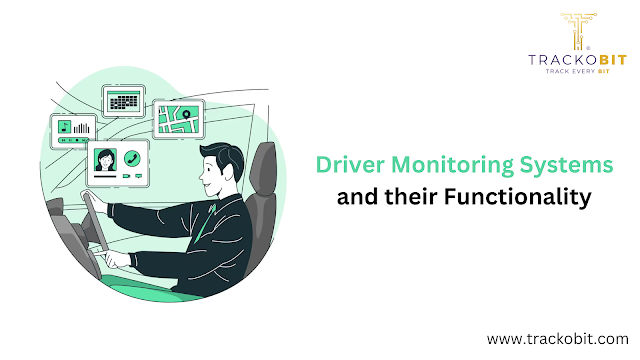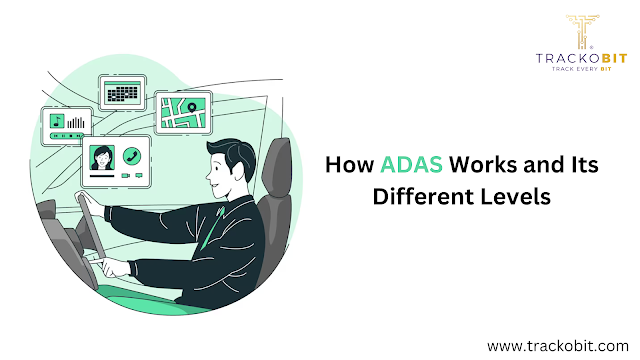How Vehicle Tracking System Improves Driver Behavior Monitoring?
As the logistics and delivery services are becoming fast-paced, businesses are gearing up with advanced
technology & methods to rake in operational efficiency. Logistics businesses are always on toe to deliver timely
& safe service to their customers.
But oftentimes, it’s the delayed or missed delivery that dismals the whole customer's experience. Plus, as a fleet manager, you are constantly worried about the current location of your fleet of vehicles, their driving condition, and whether they are safely functioning on the road or not.
For that monitoring driver behavior is crucial for businesses to ensure efficiency, safety as well as cost-effectiveness. Today the vehicle tracking system has emerged as a powerful tool that enables businesses to monitor and analyze driver behavior effectively.
Let’s help you understand how can vehicle tracking help you monitor driver behaviour through advanced driver behaviour analytics.
6 Ways How Vehicle Tracking System Helps Monitor Driver’s Performance
Other than helping in creating optimal routes, the vehicle tracking systems help fleet managers monitor drivers’ braking, speeding, and accelerating patterns. All in all, they are the best resort for driver behavior monitoring.
Real-time Insights
Vehicle tracking systems offer real-time driver behaviour analytics related to speeding, acceleration, braking, idling, and more. The system gathers real-time data through onboard sensors and GPS devices to ascertain the driver’s driving patterns. With this real-time data, fleet managers can easily monitor driver behavior and take immediate corrective actions whenever necessary.
Safe & Secure Commutes
Speeding, harsh braking, and reckless maneuvers lead to accidents. By monitoring driver behavior through vehicle tracking, businesses can look into these factors and prioritize safety. Vehicle Tracking Software are capable enough to reflect drivers’ acceleration, braking, and driving patterns and provide all this raw data to fleet managers in the form of alerts and notifications. This information further helps fleet operators take proactive measures to avoid them.
The proactive measures can involve maybe targeted training or coaching to drivers or any custom approach that can promote safer driving culture.
Fuel Efficiency and Cost Savings
Identifying driver behavior is significant as it reflects highly on fuel consumption and operating costs. Vehicle tracking system can help identify drivers’ fuel-wasting habits led by excessive idling, aggressive acceleration, and unauthorized vehicle use.
By monitoring and analyzing this data, fleet managers can lay measures that help with fuel efficiency, reduce operational costs, and promote environmental sustainability.
Maintenance Optimization
Monitoring driver behavior also helps in optimizing vehicle maintenance. Fleet managers can identify aggressive driving behaviors, such as harsh braking, and rapid acceleration which cause the wear down of the vehicles through driver behavior monitoring system
By tracking and acknowledging these patterns, fleet managers can identify the need for maintenance proactively, schedule frequent maintenance routines, and save a lot on costly repairs.
At the bottom line, with proactive maintenance, fleet managers can extend their vehicle’s lifespan, improve fleet performance, and minimize downtime.
Compliance and Accountability
Vehicle tracking systems ensure fleet managers are operating vehicles in compliance with regulations and policies. Such systems allow fleet managers to set up geofencing and boundary alerts to ensure that drivers don’t drive beyond approved routes or end up entering restricted zones.
In addition, tracking systems are great at tracking driving hours, rest periods, acceleration patterns, and speed limits. All in all, with better adherence to regulations and policies, businesses can avoid risks pertaining to regulatory violations and keep up with a positive reputation.
Evaluation of Performance for Training
When the gathered driver behavior analytics is transformed into insights and visualizations, it helps take note of drivers’ performance and use it further to train them. Fleet managers can easily identify areas of improvement and create custom programs to teach efficient driving patterns through advanced real-time vehicle tracking software.
These programs can be tailored to improve drivers’ skills or reflexes for defensive or fuel-efficient driving. Furthermore, other than just analyzing gaps, the tracking data can be used to reward drivers who show safe and productive performance on the road.
The benefits of driver behavior tracking systems are uncanny. They help you right from gathering driver behavior to understanding methods to reduce cost and maintain fuel efficiency.
Conclusion
Vehicle tracking technology serves a multitude of benefits to businesses that want to monitor and improve their driver’s behavior. From enhancing safety to reducing fuel consumption to promoting compliance and maintenance, tracking systems offer valuable insights enabling fleet managers to make informed decisions.
With real-time vehicle tracking software, it is easy for businesses to create safe, more efficient, and cost-effective fleet management systems cultivated by safe driving habits.
Related Blog:- How Fuel Management Software Overcomes 4 Key Challenges?
.png)

.png)

Comments
Post a Comment